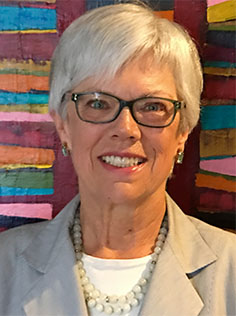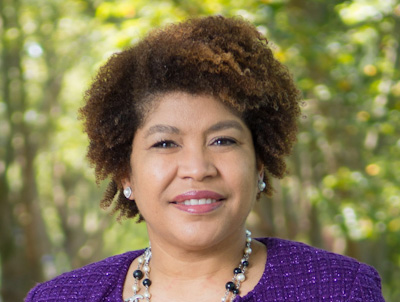Is this a key moment for the bar exam?

“It’s like a tidal wave,” says Sean Silverman, owner of Silverman Bar Exam & LSAT Tutoring. “It can’t be a coincidence.” (Image from Shutterstock)
California is creating its own bar exam. The ABA approved additional pathways to licensure. States are lowering bar pass cut scores. And the NextGen Bar exam launches in 2026.
The typically slow-moving wheels of bar exam reform have sped up in the past few months, creating a pileup of changes that some experts say makes this a key moment for the venerated-yet-dreaded licensing exam.
“It’s like a tidal wave,” says Sean Silverman, owner of Silverman Bar Exam & LSAT Tutoring. “It can’t be a coincidence.”
The bar exam is an easy target. “Nobody likes it,” says Kellye Testy, executive director and CEO of the Association of American Law Schools. “It really hasn’t shown that it had a strong correlation to success in practice.”
Previously, despite consistent grumblings about the bar exam since its first iteration by the National Conference of Bar Examiners 52 years ago, there was no appetite for reforming the licensing process, says Joan Howarth, emerita professor at the University of Nevada Las Vegas William S. Boyd School of Law and the author of Shaping the Bar: The Future of Attorney Licensing. “I’m not sure that people even talked about reform much.”
Now, various jurisdictions are considering different plans to course-correct, with a potential domino effect of consequences among the states.
 Joan Howarth, emerita professor at the University of Nevada Las Vegas William S. Boyd School of Law: “The world of bar exams had been shockingly stable, and suddenly, in 2020, jurisdictions were not able to do what they had been doing for generations.” (Photo by Carmen Estrada)
Joan Howarth, emerita professor at the University of Nevada Las Vegas William S. Boyd School of Law: “The world of bar exams had been shockingly stable, and suddenly, in 2020, jurisdictions were not able to do what they had been doing for generations.” (Photo by Carmen Estrada)
Why now?
Driving the changes are a constellation of factors: measures adopted during the COVID-19 pandemic, the development of the NextGen bar exam, increased exam costs, equity efforts, demographic shifts, concerns about access to justice and concerns about whether new attorneys are practice-ready, experts contacted by the ABA Journal say.
In 2028, the National Conference of Bar Examiners will sunset the current Uniform Bar Examination and its components—the Multistate Essay Examination, the Multistate Performance Test and the Multistate Bar Examination. That’s prompted states to examine when—and if—they will start using the NCBE-developed NextGen exam.
The shift puts all options on the table, experts agree. “Because there’s a new test coming, it got states thinking: ‘Why don’t we consider all the different changes that we might make?’” Silverman says.
The first administration of the NextGen exam is scheduled for July 2026. Along with eliminating a paper-and-pencil option, the new exam will emphasize skills junior attorneys need—such as research, client management and dispute resolution.
While planning for the NextGen exam started in 2018, two years before the world was blindsided by COVID-19, the early days of the pandemic jolted jurisdictions into using options like diploma privilege and remote testing. And around the same time, new research—including the Building a Better Bar study co-authored by Deborah Jones Merritt, Moritz College of Law professor emerita and a consultant to Oregon’s Licensure Pathways Development Committee; and Logan Cornett, director of research at the Institute for the Advancement of the American Legal System—supported the complaints about the UBE being overly focused on memorization instead of practical skills.
“The world of bar exams had been shockingly stable, and suddenly, in 2020, jurisdictions were not able to do what they had been doing for generations,” Howarth says. “That was a wake-up call because everyone was pushed out of doing the routine.”
As NextGen moves toward its launch, sources agree the NCBE’s work to shift to the new exam is admirable. But some worry that it is merely a tweak and not a complete overhaul. “Everybody agrees it’s better,” Testy says. “But the question is, does it go far enough?”
Since November, 21 of the 56 U.S. jurisdictions have committed to the new exam, and another could come online soon, says Judith Gundersen, NCBE president. “So that’s actually pretty quick, right?” she adds. “We think that most jurisdictions in the end will say this is a good test for lawyers and that it’s a good reflection of what the newly licensed lawyer does in practice.”
Remote control
Despite technical hiccups, the pandemic’s emergency measures proved that remote tests could be done. But experts say but they also exposed NCBE’s tight hold on the reins of the exam.
“Jurisdictions found out they couldn’t do what they want with the bar exam because the NCBE had control over how to use the NCBE products,” Howarth says, adding the NCBE’s tight reins helped inspire California to make changes.
The cash-strapped State Bar of California, the No. 2 jurisdiction in number of candidates tested each year, aims to save money by shunning exams produced by the NCBE, which prohibits remote administrations. The state’s admissions fund faces insolvency by 2026.
“California just can’t afford to rent those huge convention halls for 12,000 people a year,” Merritt says.
Instead, in July, the state bar approved entering an agreement with Kaplan to create its own MBE-style test as part of a plan for administering “a fully remote online exam, utilizing small vendor-owned test centers or a combination of the two,” saving millions annually. The plan was put on hold after the NCBE wrote Kaplan in May, reminding the test prep company that creating questions based on NCBE-produced tests could violate their license agreement.
 Brian Gallini served on the Oregon State Board of Bar Examiners’ Alternatives to the Exam Task Force. (Photo by KJ Johnson)
Brian Gallini served on the Oregon State Board of Bar Examiners’ Alternatives to the Exam Task Force. (Photo by KJ Johnson)
The terms of the five-year, $8.25 million contract include Kaplan delivering a multiple-choice question test to be administered in February 2025, along with applicant and faculty study guides by fall of 2024. Essay and performance test questions would be delivered in 2026, and Kaplan would also exit the retail bar prep business in California.
Now that California’s exam will not be a NCBE product, “we will do what we reasonably can to support California’s bar examinees,” Sophie Martin, NCBE communications director, wrote to the Journal, “but once California implements the new exam, support will need to come from the state bar.”
Still, other states might follow California, experts say. “They might need California as that first state to step out of the whole NextGen exam,” Silverman says.
Nevada, a much smaller jurisdiction, didn’t wait. Its state supreme court is considering its own shifts to licensure without an NCBE test. Currently, the state bar uses the MBE and then drafts its own open-book essays and performance tests.
Under its proposed plan posted for notice and comment, candidates would take a multiple-choice test during law school, followed by a performance test after graduation plus 40 to 60 hours of supervised practice while in or after law school. Implementation could come as early as 2027. There also have been discussions of piggybacking on California’s proposed exam developed with Kaplan.
“It’s no longer automatic pilot to use NCBE products,” Howarth says. “To the extent that there used to be only one game in town, and now there’s more variety—and that clearly changes the the power.”
Alternative pathways
In Nevada, supervised practice would be just one of several mandatory steps to entering the bar, but Oregon and Washington are creating pathways only involving hands-on assessments without any testing.
In November, the Oregon Supreme Court approved the Supervised Practice Portfolio Examination, requiring graduates to complete 675 hours of supervised practice and submit a a portfolio of legal work that the Oregon State Board of Bar Examiners considers minimally competent. The option has proven popular with new graduates and employers. Washington followed suit in March, offering three ways to bypass the bar exam involving apprenticeships or internships.
Those pathways gained legitimacy when the council of the ABA Section of Legal Education and Admissions to the Bar approved a policy shift in May that now allows states to use methods of licensure beyond the traditional bar exam. (While the ABA controls accreditation of law schools, lawyer licensing is handled by individual jurisdictions.)
That blessing could encourage even more states, says Brian Gallini, who served on the Oregon State Board of Bar Examiners’ Alternatives to the Exam Task Force. “To take an organization that has taken no position on this pathway for a triple-digit number of years, and then to have it suddenly say, ‘You know what? States really should think about this’—that’s big,” he told the Journal in June. “The wave has not yet crested.”
Meanwhile, the NCBE is willing to help jurisdictions develop exams testing their state laws, Gundersen says.
“We are absolutely willing and able to help jurisdictions if they want to craft their own local component. That’s our stock and trade—item development, measurement expertise.” She did not offer specifics on how that would work.
 “Most law graduates fail the bar within a small mark, usually less than five points,” says Tamara F. Lawson, dean of the University of Washington School of Law. “That’s leaving very competent graduates on the sidelines.” (Photo by Greg Olsen)
“Most law graduates fail the bar within a small mark, usually less than five points,” says Tamara F. Lawson, dean of the University of Washington School of Law. “That’s leaving very competent graduates on the sidelines.” (Photo by Greg Olsen)
Cutting cut scores
Meanwhile, some states are taking a hard look at their cut scores. A failing grade in one state could be passing in another.
“Most law graduates fail the bar within a small mark, usually less than five points,” says Tamara F. Lawson, dean of the University of Washington School of Law. “That’s leaving very competent graduates on the sidelines.”
Cut scores, which are set by each jurisdiction, currently range between 260 and 270 after five states lowered their passing standard in 2023. In July, an Arizona Supreme Court order created a program that allows those who came within 10 points of the cut score of 270 to earn licensure after performing two years of supervised practice in a government position, at a nonprofit or in a rural area.
More changes could come, sources say. The NCBE is working on a concordance scale that provides comparable UBE to NextGen scores, Gundersen says, giving “jurisdictions an opportunity to say, ‘Maybe we want to step back and look at the passing standard and reset it.’”
High cut scores put extra pressure on underrepresented students and those from less financially secure backgrounds, experts say. In 2023, white bar-takers in the U.S. had a first-time pass rate of 84%; Asians, 74%; Hispanics, 71%; and Blacks, 58%, according to the ABA. That’s because the current system favors students with solid financial resources who can afford expensive bar prep and unpaid time off to memorize myriad legal standards, experts say.
“We know that the traditional bar exams come with persistent racial and ethnic disparities,” Howarth says. “We know also that the cut score decisions can exacerbate or mitigate those disparities. We’re not protecting the public, which is diverse.”
As it prepares to make recommendations about how to address challenges in legal education, the bar admissions process and the declining numbers of attorneys dedicated to public interest law, the Committee on Legal Education and Admissions Reform, a group made up of nine state supreme court chief justices and three state court administrators, is conducting listening sessions around the country, seeking ideas on how to remedy these issues. It will issue a report with practical suggestions in mid-2025, says Gordon J. MacDonald, chief justice of the New Hampshire Supreme Court and CLEAR committee chair.
Leveling the playing field was one reason Oregon chose to add a pathway that pays graduates as they perform supervised practice right out of law school to earn admission to the bar, says Gallini, who recently left Oregon’s Willamette University College of Law as dean.
“No one’s talking about how much it costs to take this exam,” adds Gallini, who is now dean of Quinnipac University School of Law. “Students have to take out separate bar loans because their cost of licensure is not folded into federally backed education loans.”
As demographics shift, the baby boom retires and law schools produce a shrinking pool of graduates, the bar needs to be less exclusionary, Howarth says.
At the same time, more lawyers are needed to slow access to justice issues. Self-representation reaches above 90% on many dockets around the country, MacDonald says.
Splintering bar
With various states considering different approaches to the bar, some wonder if the splintering could impact portability.
Currently, 41 jurisdictions use all or a portion of the UBE, and scores are often portable. But that’s not necessarily the end of the story. Reciprocity can involve a tangled web of restrictions as each jurisdiction sets its own requirements for application and admission, which can include things like local exams, classes or pro bono work.
“The whole thing doesn’t make any sense, right?” Howarth says. “We have a bar exam that tests the law of no state—it tests only federal law. Yet, if you have two adjoining states, you have to be admitted separately, based on the same uniform exam.”
The NCBE maintains that the UBE offers a standardization of grading that eases portability, Gundersen says. Through the end of 2023, there were 54,767 transfers of scores to other jurisdictions for licensure, according to the NCBE. That’s nearly 60,000 bar exams that didn’t have to be taken, she says. “That’s a lot of time, and that’s a lot of money.”
Gundersen emphasizes that the NextGen will continue portability. “We’ve not heard, ‘We’re not going to accept the new test score,’ or that ‘We are not going to continue to accept the old score,’” she says.
Offering alternatives to licensure “absolutely challenges” portability, making it among the CLEAR committee’s priorities, MacDonald says.
But the UBE shouldn’t be seen as the only means to portability, says Marsha Griggs, associate professor at the St. Louis University School of Law and president of the Association of Academic Support Educators. “While yes, that’s a beautiful feature of a uniform exam, the reality is every state had always had the ability to accept a portable score before there was even a uniform exam or even a multistate exam,” she adds.
States considering new options to licensure is the perfect impetus to rethink the logistics of reciprocity, Howarth says.
“Once we recognize that there are a variety of different ways to assess minimum competence, it does not make as much sense to keep barriers up jurisdiction by jurisdiction for lawyers who have practiced successfully in other jurisdictions,” she says. “Let’s be frank, it’s very protectionist.”
Potential employers considering candidates for jobs might consider certain pathways “less than,” as happened during COVID-19’s emergency orders for diploma privilege, some say.
“There was this perception that you weren’t going to be considered as ready for something as a rigorous of the practice of law if you haven’t gone through a bar exam,” says Greg Bordelon, assistant professor of legal studies at Suffolk University, “which is fallacious because that presupposes that if you cram law for two months, you’re going to be a good lawyer.”
Employers in 2020 in Oregon changed their minds quickly once they realized graduates given diploma privilege were eligible to work immediately instead of on hold for the six months it typically takes new hires to pass the bar exam, says Gallini, who is now a consultant to Oregon’s Licensure Pathways Development Committee.
 “There was this perception that you weren’t going to be considered as ready for something as a rigorous of the practice of law if you haven’t gone through a bar exam,” says Greg Bordelon, assistant professor of legal studies at Suffolk University.
“There was this perception that you weren’t going to be considered as ready for something as a rigorous of the practice of law if you haven’t gone through a bar exam,” says Greg Bordelon, assistant professor of legal studies at Suffolk University.
Gateway to licensure
The ABA Standards and Rules of Procedure for Approval of Law Schools states that every bar candidate should be “examined by public authority to determine fitness for admission,” but it does not specify what the standards of fitness are or how that should be measured.
But with so much in play, the question is raised—why is the bar exam necessary?
“Well, it’s trying to protect the public, and it’s trying to assess minimum competency,” Gallini says. “But there’s never been an evidence-based definition of minimum competence.”
With the range of types of attorneys and tasks, creating an exam that tests all of them is a tough job, experts agree.
“The problem is that lawyers do so many diverse things. It’s hard to capture what exactly minimum competency means,” Bordelon says. “Is it the same thing for being lead prosecutor on an assault trial? Or is it the same thing for reviewing a contract as in-house counsel?”
As of late 2023, nearly 280,000 UBE exams had been administered in the U.S., according to the NCBE, and some attorneys push back against any alterations.
Some educators wonder why. “Are you wedded to this because you really believe it’s a better educational tool for protecting the public? Or is it more of, because ‘I had to do it, you should too,’” Gallini says.
“That mindset is just part of this paternalistic hazing ritual,” Griggs says.
With all the shifts and unresolved proposals for changing the bar, Bordelon worries about the impact on students.
“The bigger concern is the timeline. Law students are a nervous bunch,” he says, “and they need to be aware of what’s going to happen.” In early July, that prompted the Association of Academic Support Educators to cry foul, saying the NCBE is making too many shifts in content too late in the game.
While sources agree there will always be a gateway to entering the bar, what the best method is and what that looks like could—and likely should—change over time.
“There will always be a bar examination,” MacDonald says. “Whether there can be additional steps beyond what the NCBE is taking with the NextGen to encourage more experiential learning is something we ought to be thinking about.”
“We can all imagine a different kind of system,” Howarth adds.
See also:
‘Shaping the Bar’ author says bar exam protects legal profession, not public



